

Biodiversity
Action
Plan

Veteran trees with their substantial girth, holes and crevices, rot and dead wood, support a wide range of often uncommon fungi, lichen, mosses, invertebrates -particularly beetles, and notably bats.
The age, size and distinctive shapes of veteran trees, both native and non-native species, are of exceptional value for wildlife and their contribution to the historic landscape.
Veteran trees are usually old, beyond the peak of their growth. They may also be younger, middle-aged trees with veteran characteristics:
|
|
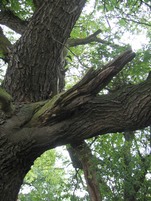
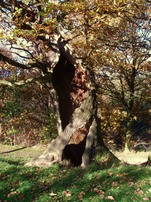
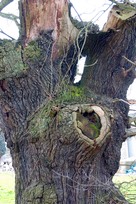
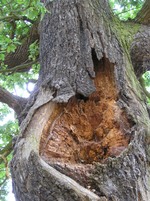
Determine whether a tree is an ancient or other veteran tree, by asking whether the tree has one or more of:
- a girth that is very large for the species, allowing for growing conditions
- extensive decay or hollowing in exposed parts of the central wood
- a crown that has undergone retrenchment, smaller since maturity.
And then identifying the veteran features present: the more there are the more likely the tree is to be veteran or indeed ancient. Veteran trees are protected under the national planning policy framework.
Most veteran trees are found in historic parklands (60% nationally), however some are found as isolated individuals or in small numbers in hedgerows, churchyards and, as relics of older landscapes, in fields.
Some veteran trees may be quite small in size, depending on the species and factors such as growing in adverse conditions. Local examples include Oaks on Wharncliffe Crag and Hawthorns in Stainborough Park.
See the Parkland habitat pages [links below] for more on Veteran Trees.
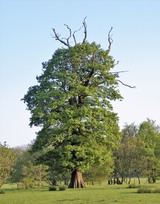
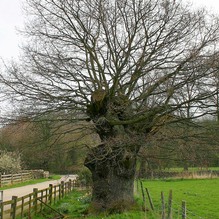
Veteran Trees
All ancient trees are veteran trees. However not all veteran trees are old enough to be ancient. Some veteran trees have developed their features as a result of incidents in their shorter lives and perhaps their environment. Veteran trees –whether ancient or not– are important for biodiversity.
Other trees may be notable for reasons such as size and position in the landscape.
Key Guidance
Ancient & veteran trees: An assessment guide, Woodland Trust.Gilmartin, E. (2022)
Natural England:
Standing Advice on Ancient Woodland and Veteran Trees Veteran Trees management
Forestry Comm: Veteran trees
Woodland Trust: Ancient trees
Ancient Tree Forum: Information
Wokingham Veteran Tree Association has published Estimating the age of trees.with tables of girths and estimated ages for different tree species and growing conditions
Veteran Tree
Characteristics
The Ancient Tree Inventory distinguishes between ancient trees, veteran trees and notable trees.